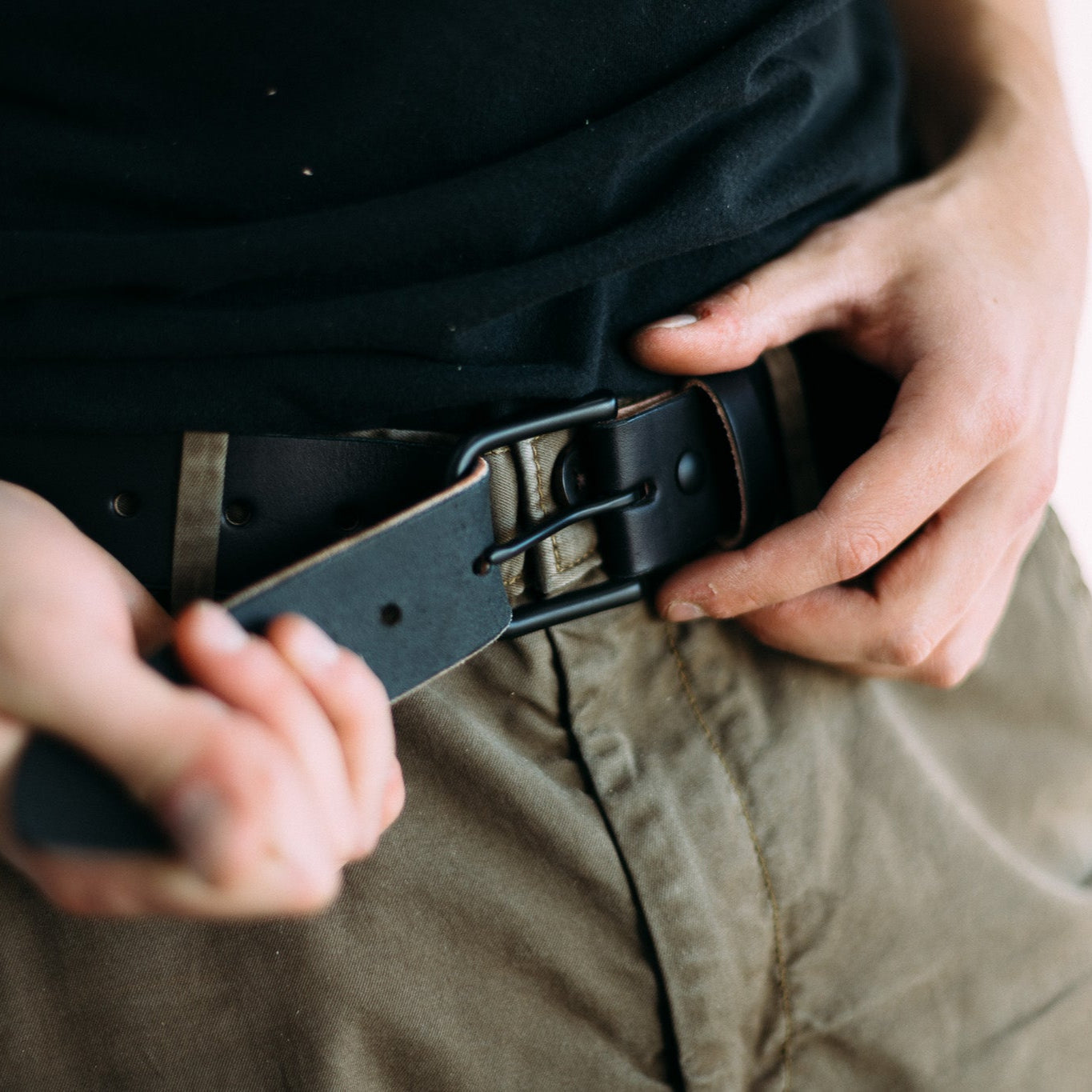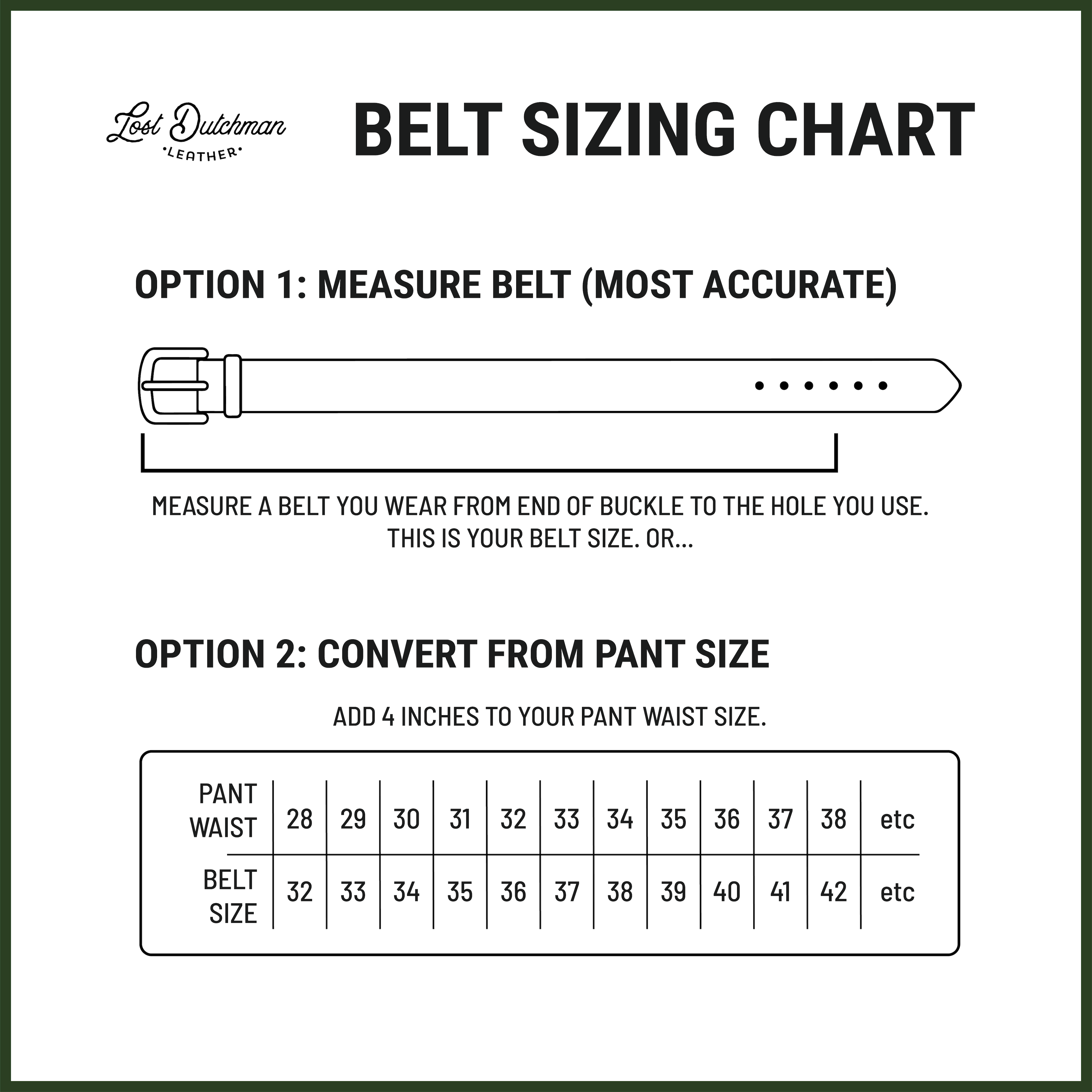
Choosing Belt Width for Jeans vs Trousers
The right belt changes everything. It’s the quiet detail that balances an outfit, the bridge between fabric and form. Too wide with tailored pants, and the look feels heavy. Too slim with denim, and the proportions fall apart.
A belt doesn’t just hold your clothes together; it holds the whole outfit in place, visually and physically. Knowing when to reach for a wide belt for jeans and when a narrow belt for trousers fits better is one of those small distinctions that separates casual dressing from real style.
Why Proportion Shapes Every Outfit
Clothing is about proportion, even when it’s not obvious. Every piece, the drape of a jacket, the cut of denim, the taper of trousers, is designed with balance in mind. The belt is what ties that design together.
When width matches weight, everything looks intentional. Heavy fabrics like denim need thicker straps to feel grounded. Finer materials like wool or cotton twill pair best with slimmer leather that sits neatly between the loops. It’s an old principle rooted in practicality, the same logic that guided early workwear and formal tailoring.
Workers needed durable belts for thick fabrics. Gentlemen required subtle ones that slipped easily through narrow loops. That contrast still defines the difference between weekend casual and office refinement.
A Short Heritage of Belt Design
Belts have existed as long as tools and weapons. Ancient civilizations used wide, reinforced straps to carry weight. Roman soldiers wore thick, heavy belts as both protection and a badge of honor. Centuries later, artisans began decorating them with metalwork, turning a utilitarian object into something symbolic.
By the 1800s, denim workwear demanded sturdy, practical belts again, strong enough to endure labor. Meanwhile, the rise of tailored suits in the 20th century reintroduced refinement: slim belts, understated buckles, quiet elegance.
That dual history, rugged and refined, still shapes how belts are made today.
Wide Belts for Jeans: Rugged Confidence
Jeans are built tough. The fabric is dense, the loops are wide, and the style leans casual. A wide belt for jeans doesn’t just fit better, it feels right.
Ideal Width for Denim
Look for belts between 1.5 and 1.75 inches wide. This size fills jean loops perfectly, giving balance without forcing the leather. A belt that’s too narrow will slide and twist; too wide, and it’ll pucker the loops.
Leather That Belongs with Denim
Full-grain leather is the natural match. It shares denim’s durability and character, developing a patina that tells its own story over time. Both materials wear in, not out.
The Belt from Lost Dutchman Leather captures that spirit, thick, full-grain leather paired with solid brass hardware. It’s made for years of use and looks better the more it’s worn.
The Right Hardware
Jeans pair best with rugged metal tones: brushed brass, matte nickel, or aged silver. Shiny buckles feel out of place against denim’s texture. A good buckle should look like it could take a hit, simple, functional, and reliable.
Styling a Wide Belt
-
Works naturally with jeans, flannels, and leather boots.
-
Completes heavier casual outfits without drawing too much attention.
-
Pairs beautifully with sturdy accessories like those in the Wallet Collection, where similar materials and patinas echo the same craftsmanship.
A wide belt for jeans is confidence made tangible, built to move, bend, and last.
Narrow Belts for Trousers: Subtle Refinement
Trousers are a different story. They’re designed for movement and elegance. Their loops are slimmer, their lines deliberate. A narrow belt for trousers complements that form without overpowering it.
The Ideal Width
Stick between 1 and 1.25 inches. This range fits most formal loops comfortably, preserving clean silhouettes. A wider belt breaks the proportion; a slimmer one gets lost.
Craft and Finish
-
Leather: Smooth, polished full-grain works best. It feels structured but refined.
-
Buckles: Polished brass or brushed stainless steel add quiet shine.
-
Color: Black and rich brown are timeless. Burgundy or oxblood offer depth without flash.
Styling a Narrow Belt
-
Perfect for suits, business attire, and formal occasions.
-
Aligns with slim shoes like oxfords or loafers.
-
Complements minimalist accessories such as the Mini Franklin Wallet, designed for front-pocket carry and subtle style.
In tailored settings, restraint always wins. A narrow belt for trousers is about polish, a sign that everything in your outfit was chosen deliberately.
The Craft Behind Every Belt
Width decides how a belt looks; craftsmanship decides how long it lasts. Whether wide or narrow, the same principles of quality apply.
What Defines a Well-Made Belt
-
Leather: Full-grain only, the strongest cut of the hide, rich in natural fibers.
-
Stitching: Even, tight, preferably saddle-stitched by hand.
-
Edges: Smoothly burnished to prevent fraying.
-
Hardware: Solid brass or stainless steel, never plated.
That’s the standard followed in every piece at Lost Dutchman Leather. A belt from the workshop isn’t designed to last a season; it’s meant to accompany you for decades.
Getting the Fit Right
Even the best belt can look wrong if it doesn’t fit properly. The rule is simple: choose a belt that’s two inches longer than your trouser size.
If your jeans have a 34-inch waist, go for a 36-inch belt. This ensures the buckle lands neatly in the middle hole, leaving just enough tail to tuck into the first loop.
Belts like The Belt are sized this way for precision, a small but important detail that separates a refined look from a careless one.
The Belt as an Heirloom
A handmade belt carries more than function. It carries memory.
One Lost Dutchman customer once shared the story of his father’s old work belt, thick, dark, softened by years of wear. The buckle had dulled, the edges rounded smooth, but it never failed. Decades later, that same belt hangs in his workshop, a quiet reminder of work done well and tools made to last.
A good belt isn’t just worn. It’s lived in.
Caring for Leather Belts
A little care keeps leather supple for a lifetime:
-
Condition: Use natural leather balm every few months.
-
Dry Naturally: If wet, let it air dry, never near heat.
-
Store Smart: Hang it flat or roll gently to keep its curve.
-
Alternate Belts: Rotate between styles to extend life.
Pieces like the Catch-All Tray make daily organization simple, a dedicated place for your belt, keys, and wallet at day’s end.
Why Every Man Needs Both
No single belt covers every situation. Style depends on context.
-
Wide belts for jeans: Rugged, strong, and casual, ideal for denim, workwear, and weekends.
-
Narrow belts for trousers: Sleek, minimal, and elegant, essential for business and formal wear.
Owning both isn’t excess; it’s preparation. Just like owning both boots and dress shoes, it ensures you’re ready for whatever the day brings.
Dressing with Intention
Selecting the right belt is about more than matching leather to fabric. It’s about understanding proportion and purpose. A wide belt shows strength and casual confidence. A narrow belt shows precision and poise.
Each speaks a different language, but both rely on craftsmanship. That’s why every belt from Lost Dutchman Leather is made by hand, from the same full-grain hides used in the brand’s wallets and accessories.
For guidance on sizing or to request a custom fit, contact the workshop team. Whether it’s a belt for denim or one for tailored trousers, you’ll receive something that feels right from the first wear, and only gets better with age.
Because proportion isn’t about following rules. It’s about understanding balance, the kind that looks effortless because it was made that way.


